Hey, who can blame me for that title? Especially since Googling “things to do in Nice” returns only results for “nice things to do”, so if any of you have received gifts or unsolicited compliments from me recently, you’ll know it’s because I got confused.
Anyway, Cesco had put me on a train out of Italy armed with an 8-day train pass, three words of French and a ridiculously bulky suitcase. I was shuttled at speed through the familiar territory of the Ligurian coast before being subjected to a 15-minute delay at the border to switch out our engine for a French one. Somewhat disappointingly, that was the only thing that seemed to change as I crossed the border. Otherwise it was the same white cliffs, the same ochre-coloured apartment buildings and the same turquoise ocean. I don’t know what I expected – an immediate change to châteaux and vineyards as far as the eyes could see?
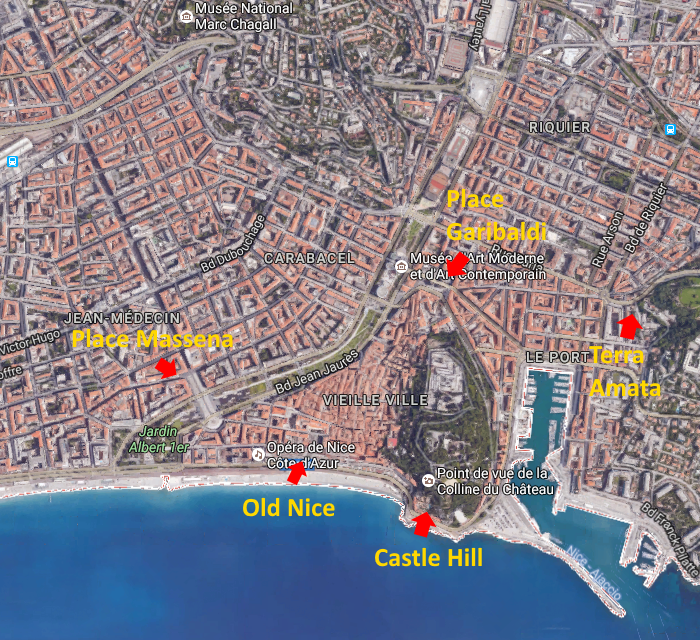
My destination was Nice, coastal resort city of southern France, and cheapest place to purchase a train ticket to from Turin. Upon arrival I dragged my luggage to Chez Patrick, a cut-price backpacker hostel in the centre of town. Then, after my own nerdy fashion, it was time to read up on this city and painstakingly annotate the provided tourist map. Since I had been on the plane when news broke of the awful Bastille Day attack – and I deliberately avoid too much current events for the sake of my faith in humanity – it wasn’t until this point that I thought “Oh, this is the place?”
And this was after I’d promised my mother I wouldn’t go anywhere dangerous. Whoops. But I’m actually pleased that I came here – tourist dollars have always been a big part of the local economy so the best way to show a middle finger to the terrorists is to visit regardless of threats.
Turned out it was a good thing I nerdified that map, because by morning the wifi had gone down and it was my only reference as I rambled around town for the single day I was scheduled to be here. I stepped out on Avenue Jean Médecin in search of breakfast and quickly found a breakfast stall providing a selection of pastries and sandwiches. I chose a focaccia sandwich, mostly for the fact that it contained tomato and I’d been missing tomato in sandwiches.
Then I wandered down the avenue towards the beach, passing the Basilique Notre-Dame de l’Assomption on the way. No, it’s not the Notre Dame from the famous book (and Disney movie),
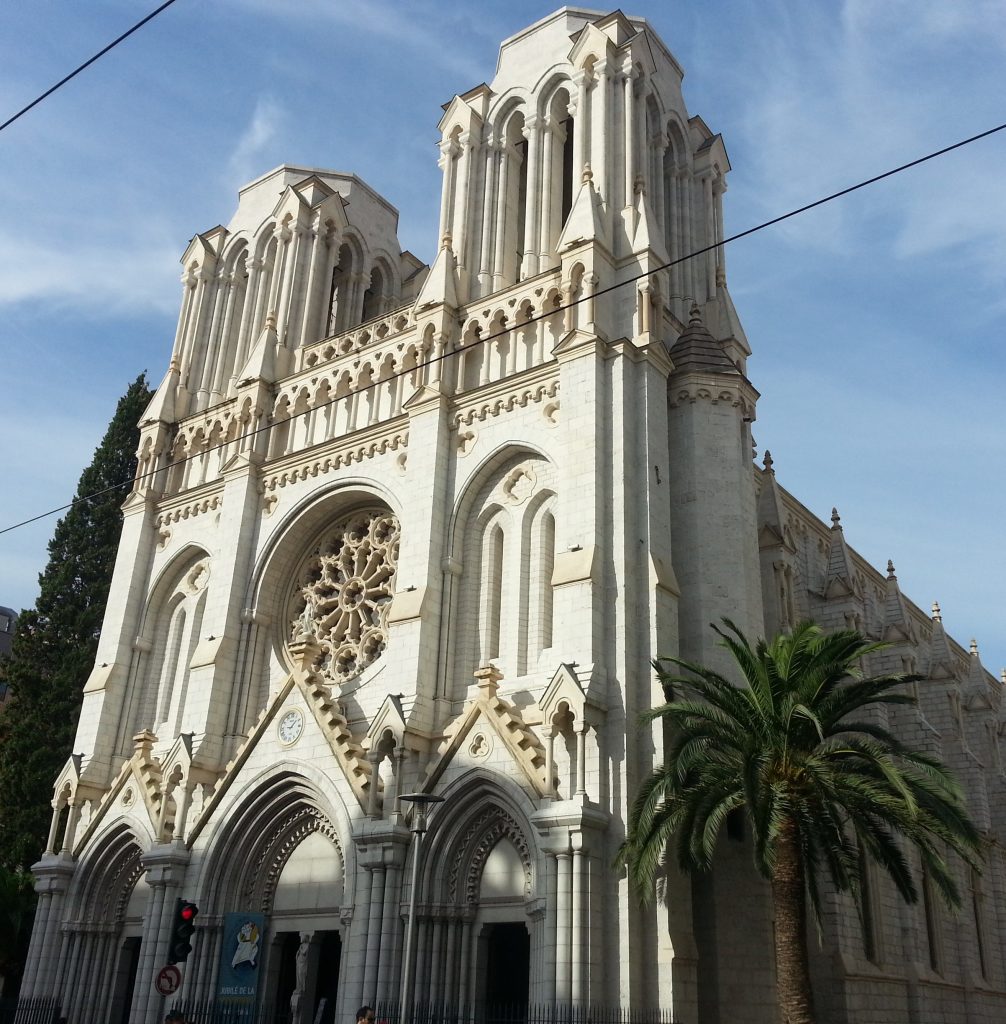
It was built in the 1860s in a pointedly French style after control of Nice was transferred from Italy to France. That’s why everything still looks so Italian – it’s only been French for 150 years!
I continued down the street to the Place Masséna, main square of Nice, created by covering over the Peillon River which runs through the city and containing art works both classic and modern. Beyond a set of seven human figures seated on tall poles (representing the seven continents) is a striking fountain featuring an enormous statue of the god Apollo surrounded by mythological figures cast in bronze.
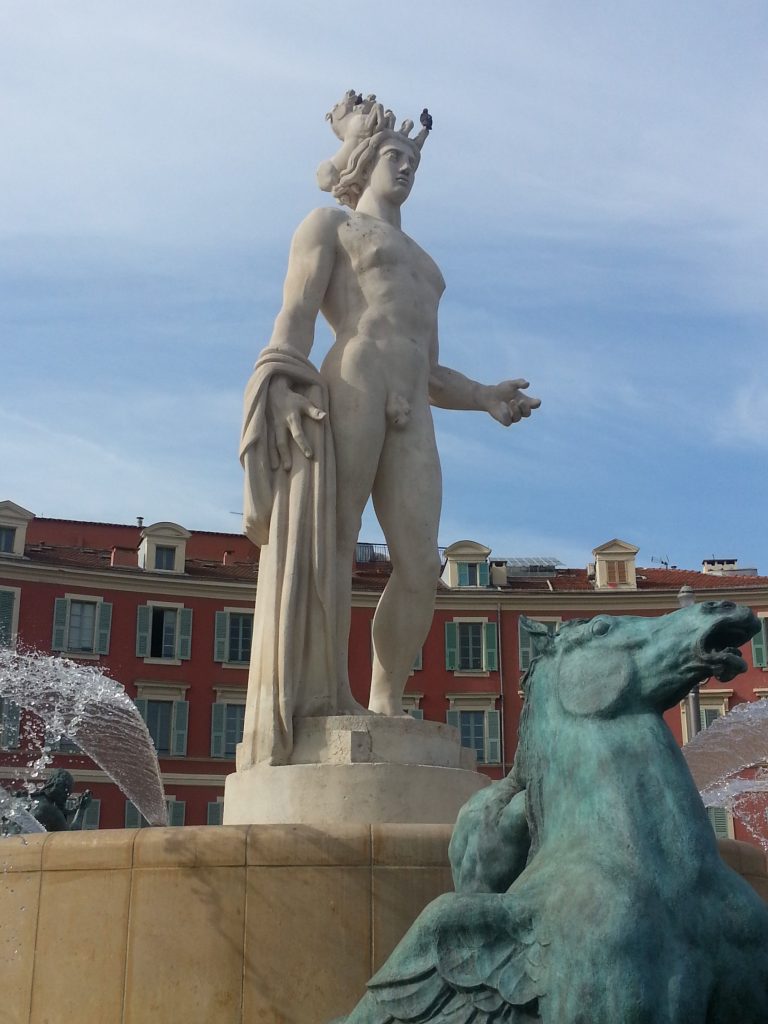
Sculpted in 1956 by Alfred Janniot, Apollo’s godly tackle scandalised the sensitive citizens of Nice. So poor Alfred was called back to trim down his creation’s junk to a more reasonable size.
This still did not satisfy the League of Feminine Virtue, who succeeded in 1979 in having Apollo moved to somewhere less troublesome. He was only restored to his rightful place in 2007 and has been strutting his stuff ever since.
Gathering the tatters of my feminine virtue, I continued the remaining few hundred metres to the sea front where I breakfasted while watching the waves, early morning swimmers and aeroplanes coming in to Nice’s busy waterfront airport.
Then it was time to dive into Vieux Nice, the old city around which this modern metropolis has grown. It’s a little triangle of narrow streets bordered by ocean to the front, the now-covered river to the north and west, and the old castle hill to the east.

I made my way past traditional craft vendors and boutique cafés, heading all the while for the hill beyond, known as Colline du Château or Castle Hill for the fortress that once defended Old Nice. Built in the 11th century it weathered many sieges before being destroyed by conquering French forces in 1706 (Nice still being part of Savoy at this time). The higher portion of the old castle grounds has been transformed into a famous park, and a cemetery was established on the lower plateau.
Naturally, that was my first stop upon finding the path to the hilltop. The cemetery was crowded with stone sculptures in white, some elaborately beautiful, some poignant.
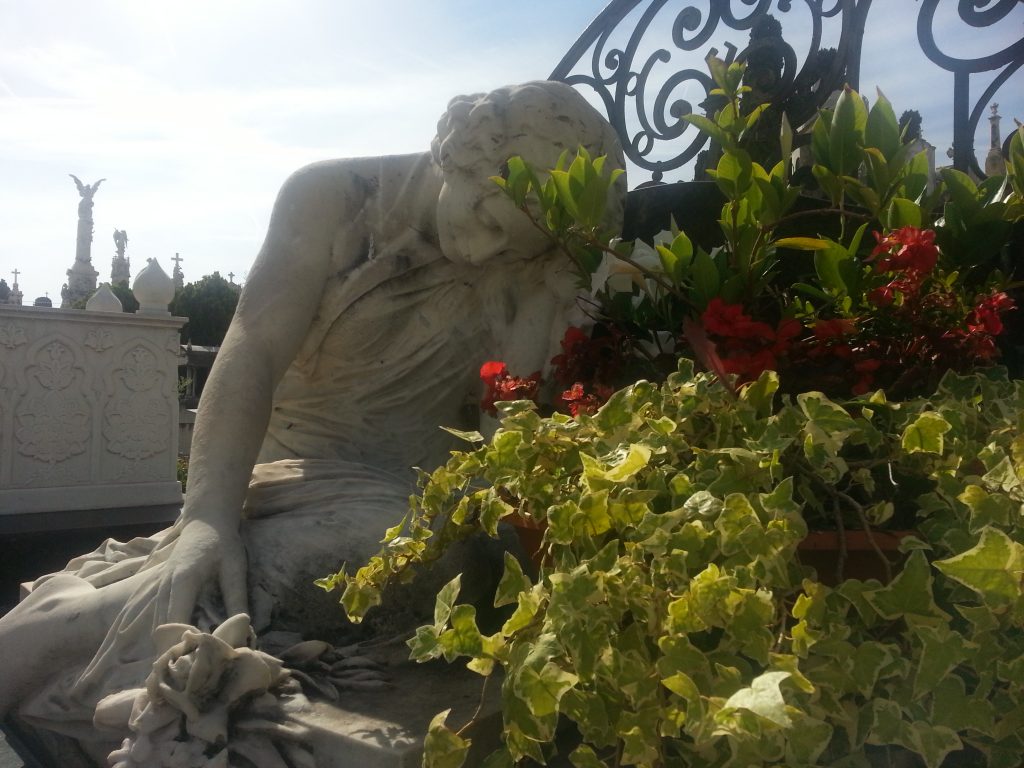
Under the watchful eyes of angels, the old city and the new spread out below. In the hazy distance the French Alps rose.

I could see more headstones over a wall but couldn’t figure out how to reach them, so I left the cemetery. Down the road I discovered another entrance, leading this time to the Jewish cemetery which is what I’d seen earlier. Visiting this place was a sobering interlude in my otherwise happy day of fun and discovery.
During the Second World War, Nice was originally occupied by Italy and became somewhat of a refuge for Jews fleeing the Nazi regime as the Italians would not deport them. But in 1943, after Italy had signed the armistice and withdrawn from the war, the city was occupied instead by Germans, and 5000 Jews were captured in the area and deported, often never to return. Some of those victims are remembered here.
After an appropriate time to pay my respects, I left and continued into the park that crowns the hill. There were many lookout points, packed with selfie-taking tourists so that I could barely edge in to get my own pictures. Then it was through a medieval gateway and into the old castle grounds.

I followed the sound of falling water, seeking the famous man-made waterfall which is the crowning gem of this leisure park. Eventually I found it, and basked in the cooling spray while some nearby young ladies tried to fix their hair before posing for a selfie. I settled for only a few comparatively boring pictures of the feature without my face to improve the shot.
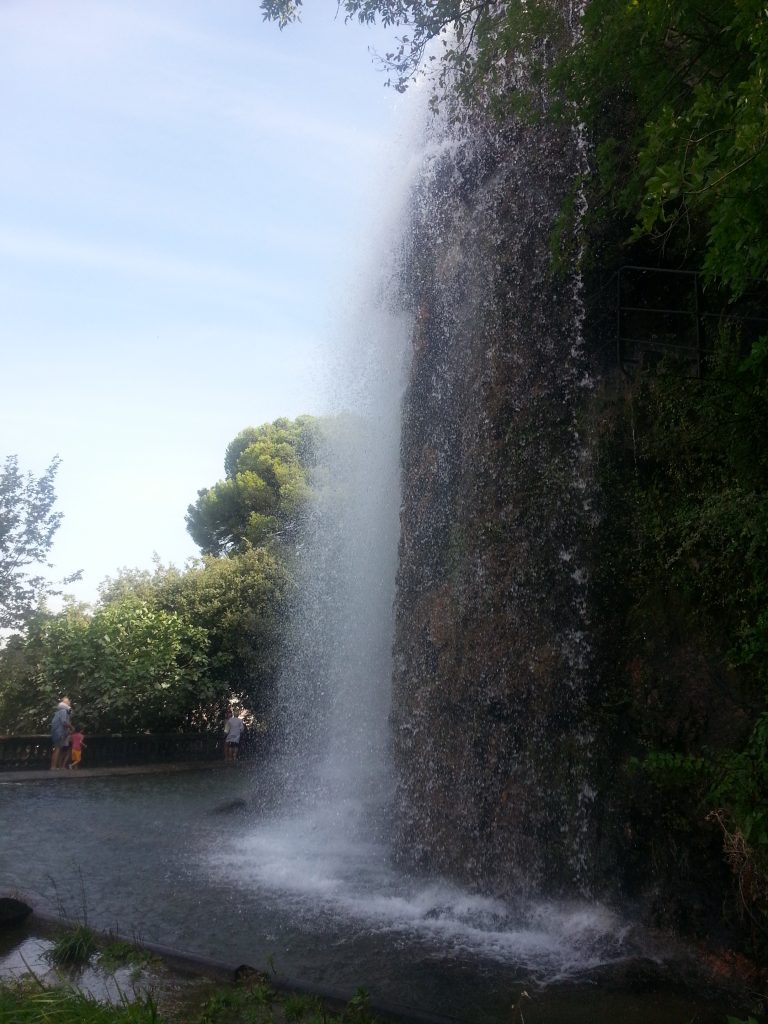
Continuing upwards, I found a courtyard containing remnants of the original castle wall, one of which featured the impact crater from a cannonball.

Then it was not much further until I reached the summit, complete not only with souvenir shop and crowd of tourists, but also with a stunning view along the coastline. I elbowed fellow tourists out of the way so I could capture a panorama.

Withdrawing to give others their turn, I began my descent down the opposite side of the hill. Passing a playground, I was drawn to the excavated ruins of a mediaeval cathedral. With all the intriguing historic remnants on this hill I could probably spend all day here but I needed to move on because I had much more to see!
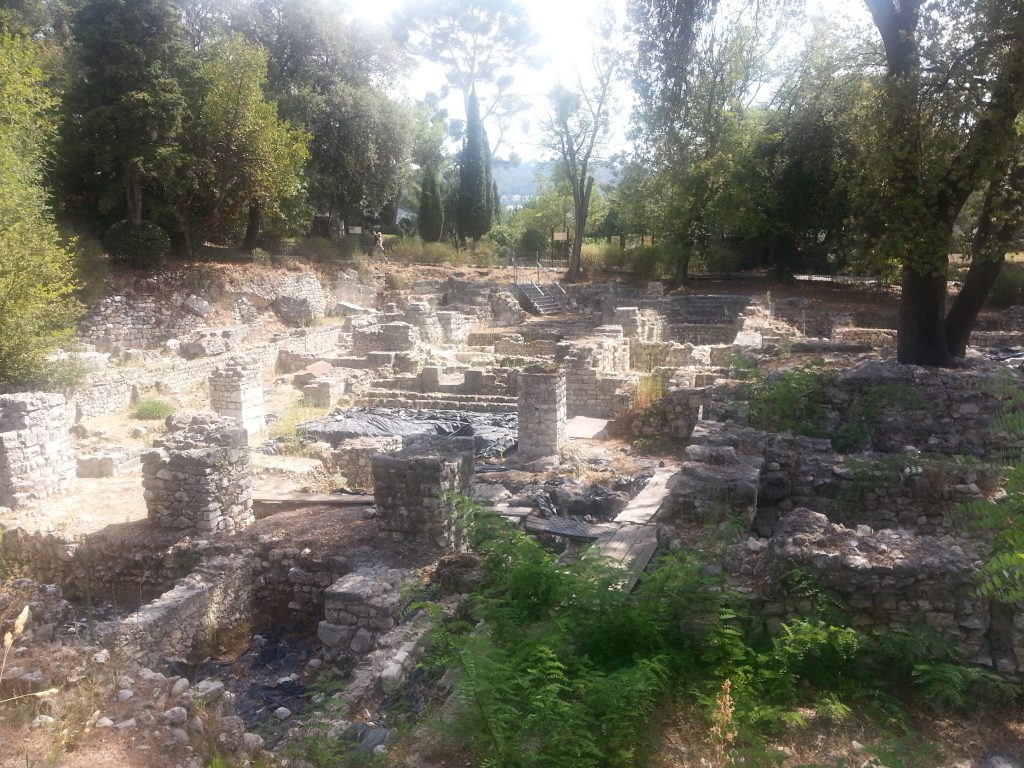
East of Castle Hill is Lympia, the harbour district. I made my way down the steep path to the waterfront, admiring fancy yachts as I passed.

My goal was known as “terra amata”, an archaeological site located on the slope of a hill beyond the harbour, once a beach but now the site of an apartment block. The site was discovered during construction in 1966, and archaeologist Henry de Lumley was given only 158 days to investigate with his team before it would all be covered back over.
Working seven days a week and, as the deadline approached, 24 hours a day, the team discovered a settlement dating to 380000BC and some of the earliest evidence of the domestication of fire in Europe. Reaching the spot was somewhat disappointing as it looks much like the rest of the city, with the addition of a museum – closed for renovation.
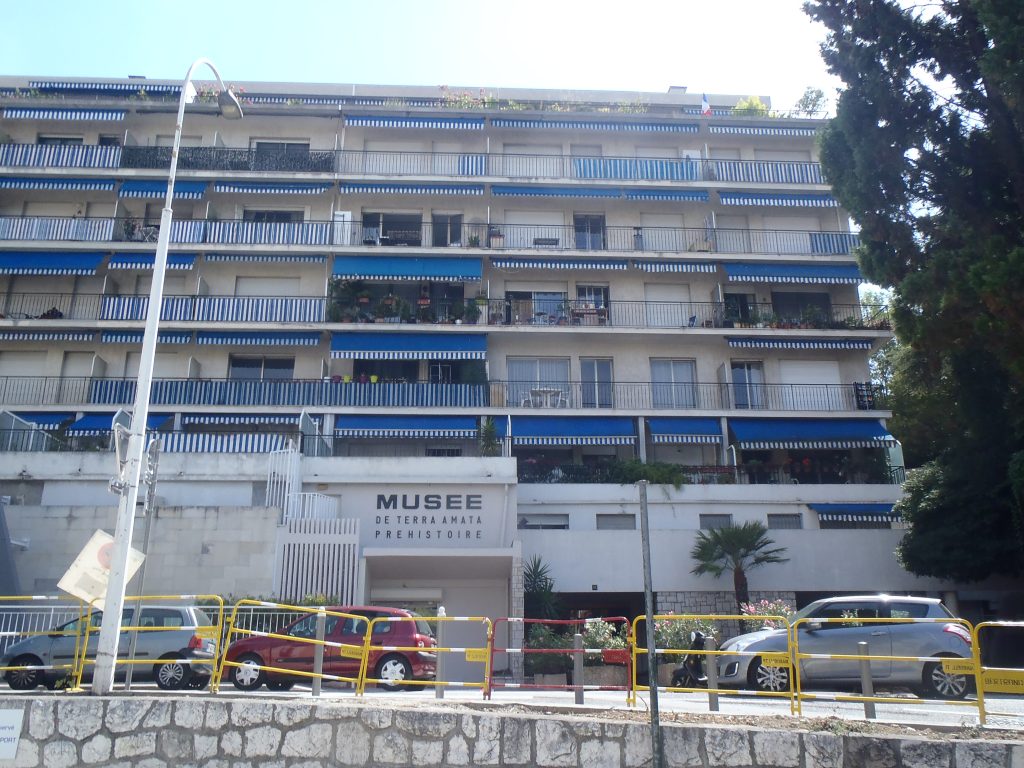
The findings have since been disputed, and it has been claimed that the site may date to “only” 230000BC, but of course the site remains inaccessible as long as people are living on top of it.
By this time my feet were aching, so I sat down and examined my tourist map as a cover for taking a rest. But within a few seconds of being seated a kindly local approached to offer directions. “Place Garibaldi?” I asked, naming my next goal, and was duly directed back past the harbour towards the northern corner of the Old Nice triangle.
So I dragged my sore legs up Rue Cassini until I reached the large square. “Garibaldi” was a name I was familiar with because it pops up all over Italy, so this place was important to allow me to tie together the places I have visited. And it turns out that Nice is the birthplace of Guiseppe Garibaldi, partner in the unification of Italy along with Camillo Cavour, who we encountered in the abandoned village of Leri Cavour. Garibaldi played the part of military genius while Cavour filled the role of politician.
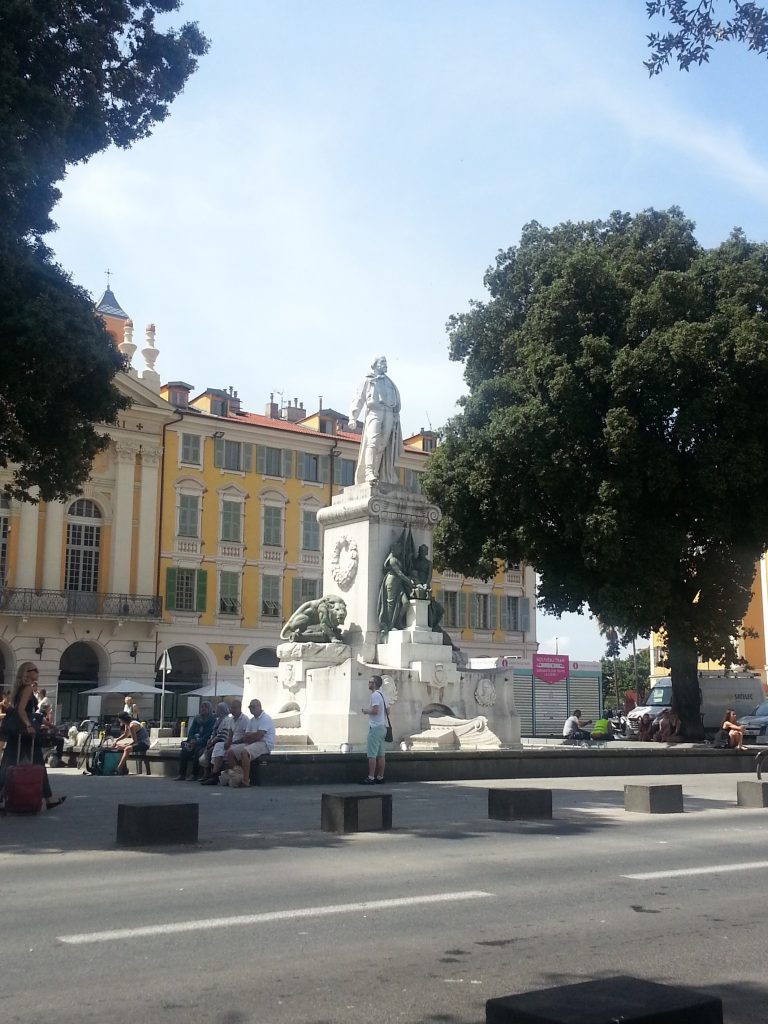
Apparently Garibaldi was somewhat peeved when Cavour chose to cede Nice to France in order to gain Emillia and Tuscany for Italy. But he was distracted enough by conquering Sicily to keep him from attempting to regain Nice.
I passed the Museum of Modern art and dragged myself back to the hostel to put up my throbbing feet. But I couldn’t rest for too long, because there was a beach to lie on! So I betogged myself, packed a towel, and retraced my steps down Avenue Jean Médecin to the shoreline promenade, known as Promenade des Anglais after being built to service the many English tourists who would flock to the city during the winter.
Unfortunately the nearest beachfront was fully occupied, so I had to walk along the shore (my feeeeeeeet) until I found some open space, coincidentally right next to the outlet of the Peillon River. After claiming my spot I took a dip in the surf to cool off. While the brilliant aquamarine surf was wonderfully refreshing, it did have a tendency to pull me away from the shore, which was somewhat alarming for a woman whose approach to swimming could best be described as “directional drowning”. I dragged myself onto the stony shore and sprawled on my towel, prepared to nap for as many hours as necessary!

And this is where I learned an interesting fact about French culture – apparently the top half of a swimsuit is not required! And here I’d been worried about having a wardrobe malfunction in my skimpy bathing suit. Only issue was that this meant I had to use a bit of discretion when getting a pic.
After a couple of hours of sunning I headed back to the hostel for a night of sound sleep. I’d fallen in love with Nice despite the touristy aspect and – say it with me – I wish I’d had more time! But tomorrow it was time to move along, as I needed to see as much of France as I could before my scheduled channel crossing in a week’s time. Tomorrow I would grab a croque monsieur from the breakfast stand (could use some tomato) and board another train to unknown lands.
References:
Apollo Statue in Place Massena by Allison Coe
Encyclopedia Judaica: Nice, France by Bernhard Blumenkranz, Georges Levitte /David Weinberg
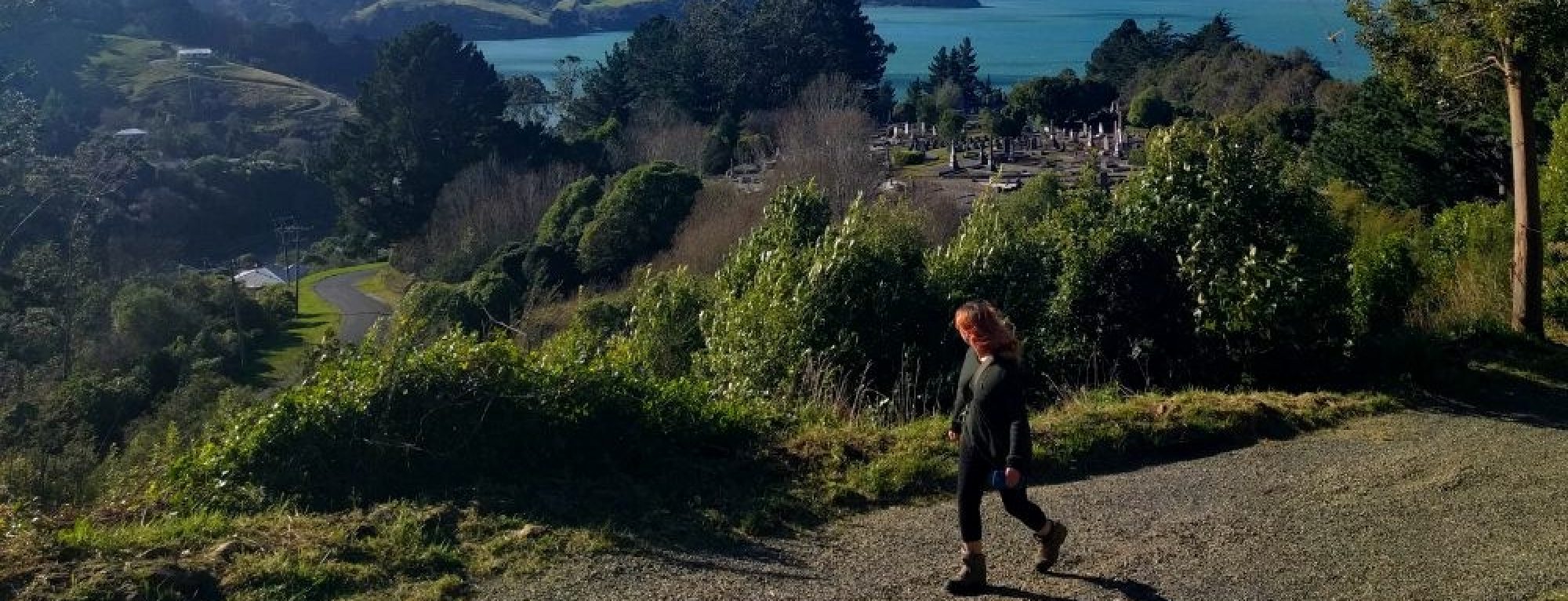


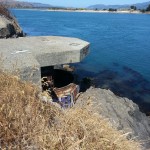
Your mother is very pleased that you managed to survive with your feminine virtue intact…in Nice.
Wonderful description of Nice and your visit.